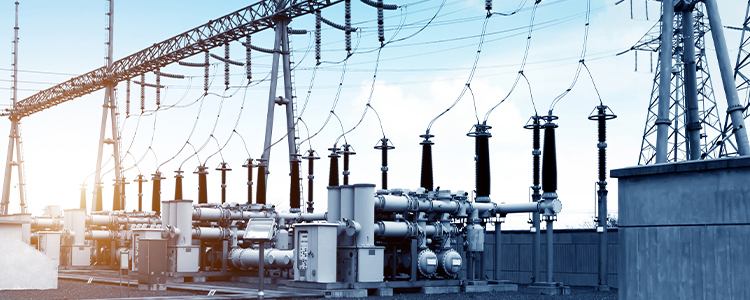- All
- Product Name
- Product Keyword
- Product Model
- Product Summary
- Product Description
- Multi Field Search


Views: 0 Author: Site Editor Publish Time: 2024-09-02 Origin: Site
Transformer substations are critical components of the electrical grid, serving as the backbone for power distribution and transmission. Their maintenance is not just about extending the life of the transformers; it’s about ensuring the safety, reliability, and efficiency of the entire power system.
In this article, we’ll explore the essential maintenance requirements for transformer substations, focusing on the specific needs of transformers, switchgear, and other critical components.
Transformer substations are designed to reduce high-voltage electricity from power plants to a lower voltage suitable for use in homes and businesses.
This process involves several key components, each requiring specific maintenance to ensure the substation operates effectively and safely.
A typical transformer substation includes the following components:
Transformers: These are used to step down high-voltage electricity to a lower voltage.
Switchgear: This includes circuit breakers, disconnect switches, and fuses, which control and protect the electrical circuits.
Busbars: These are conductors that carry large currents and connect multiple circuits.
Protection devices: These include relays and fuses that protect the substation from faults and overloads.
Control systems: These monitor and control the operation of the substation.
Regular maintenance of transformer substations is essential for several reasons:
Safety: Proper maintenance ensures the safety of personnel and the public by preventing electrical hazards and fires.
Reliability: Regular checks and maintenance help identify potential issues before they become serious problems, ensuring the reliability of the power supply.
Efficiency: Well-maintained equipment operates more efficiently, reducing energy losses and operational costs.
Compliance: Regular maintenance is often a regulatory requirement, ensuring compliance with safety and operational standards.
Transformers are the heart of a transformer substation, and their maintenance is critical for the smooth operation of the entire system.
Regular inspection and testing of transformers are crucial to identify potential issues early. Key activities include:
Visual inspection: Check for signs of leakage, corrosion, or physical damage.
Electrical testing: Perform insulation resistance tests, power factor tests, and sweep frequency response analysis.
Thermal imaging: Use thermal cameras to identify hot spots that may indicate problems.
Keeping transformers clean and ensuring proper environmental control are essential to their longevity:
Cooling systems: Regularly check and clean the cooling systems, including radiators and fans.
Seals and gaskets: Inspect and replace seals and gaskets to prevent moisture ingress.
Ventilation: Ensure proper ventilation to prevent overheating.
The insulation oil in transformers plays a critical role in cooling and insulating the system:
Oil sampling: Regularly sample and test the oil for moisture, acidity, and dissolved gas analysis (DGA).
Filtration: Use filtration systems to remove contaminants and moisture from the oil.
Replacement: Replace the oil as per the manufacturer’s recommendations or when test results indicate degradation.
Maintaining proper electrical connections is vital for the efficient operation of transformers:
Tightening: Regularly check and tighten all electrical connections.
Corrosion: Inspect for corrosion and clean or replace corroded parts.
Thermal expansion: Consider the effects of thermal expansion on connections and adjust accordingly.
Protection systems are crucial for the safe operation of transformers:
Relay testing: Regularly test and calibrate protective relays.
Alarm systems: Ensure alarm systems are functional and regularly test them.
Maintenance logs: Keep detailed records of all maintenance activities for compliance and analysis.
Switchgear is essential for controlling and protecting electrical circuits in transformer substations. Its maintenance is critical for ensuring the safety and reliability of the power supply.
Regular inspection and testing of switchgear are necessary to ensure its proper functioning:
Visual inspection: Check for signs of wear, damage, or corrosion.
Electrical testing: Perform insulation resistance tests, power factor tests, and circuit breaker tests.
Contact resistance: Measure and record the contact resistance of circuit breakers and connections.
Keeping switchgear clean and ensuring proper environmental control are essential:
Dust and debris: Regularly clean the switchgear to prevent overheating and ensure proper operation.
Moisture control: Ensure proper ventilation and dehumidification to prevent moisture ingress.
Temperature control: Monitor and control the temperature within the switchgear enclosure.
Maintaining proper electrical connections is vital for the efficient operation of switchgear:
Tightening: Regularly check and tighten all electrical connections.
Corrosion: Inspect for corrosion and clean or replace corroded parts.
Thermal expansion: Consider the effects of thermal expansion on connections and adjust accordingly.
Protection systems are crucial for the safe operation of switchgear:
Relay testing: Regularly test and calibrate protective relays.
Alarm systems: Ensure alarm systems are functional and regularly test them.
Maintenance logs: Keep detailed records of all maintenance activities for compliance and analysis.
Regular operational checks are necessary to ensure the proper functioning of switchgear:
Functional tests: Perform functional tests on all switchgear components, including circuit breakers, disconnect switches, and busbars.
Load tests: Conduct load tests to ensure the switchgear can handle the required load.
Emergency tests: Regularly test the emergency systems and backup power supplies.
Maintaining transformer substations requires a comprehensive approach that addresses the specific needs of transformers, switchgear, and other critical components.
Regular inspection, testing, cleaning, and environmental control are essential to ensure the safe and efficient operation of these critical components.
By adhering to these maintenance requirements, operators can ensure the reliability and safety of the electrical grid, extending the life of the equipment and reducing operational costs.
content is empty!